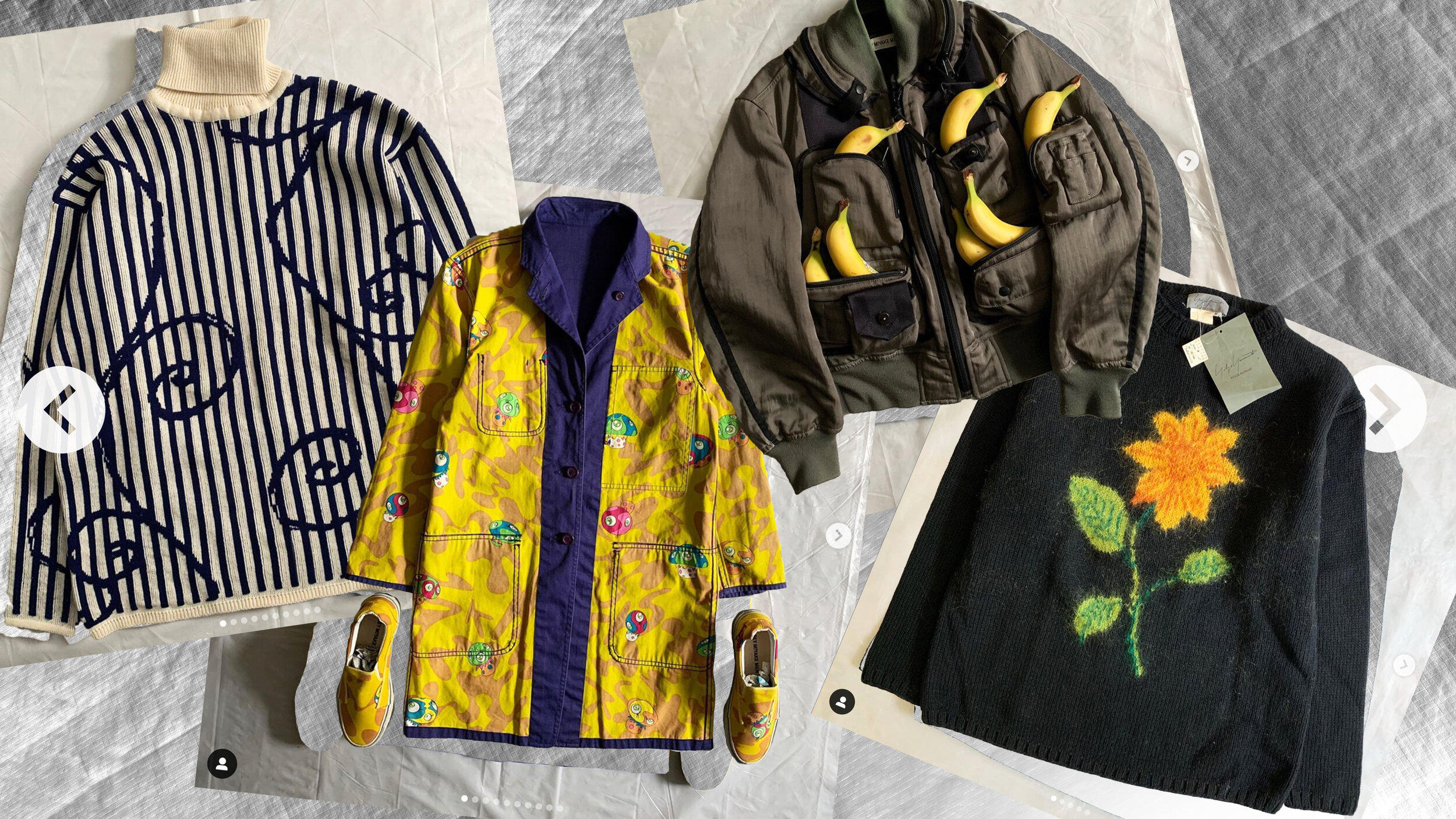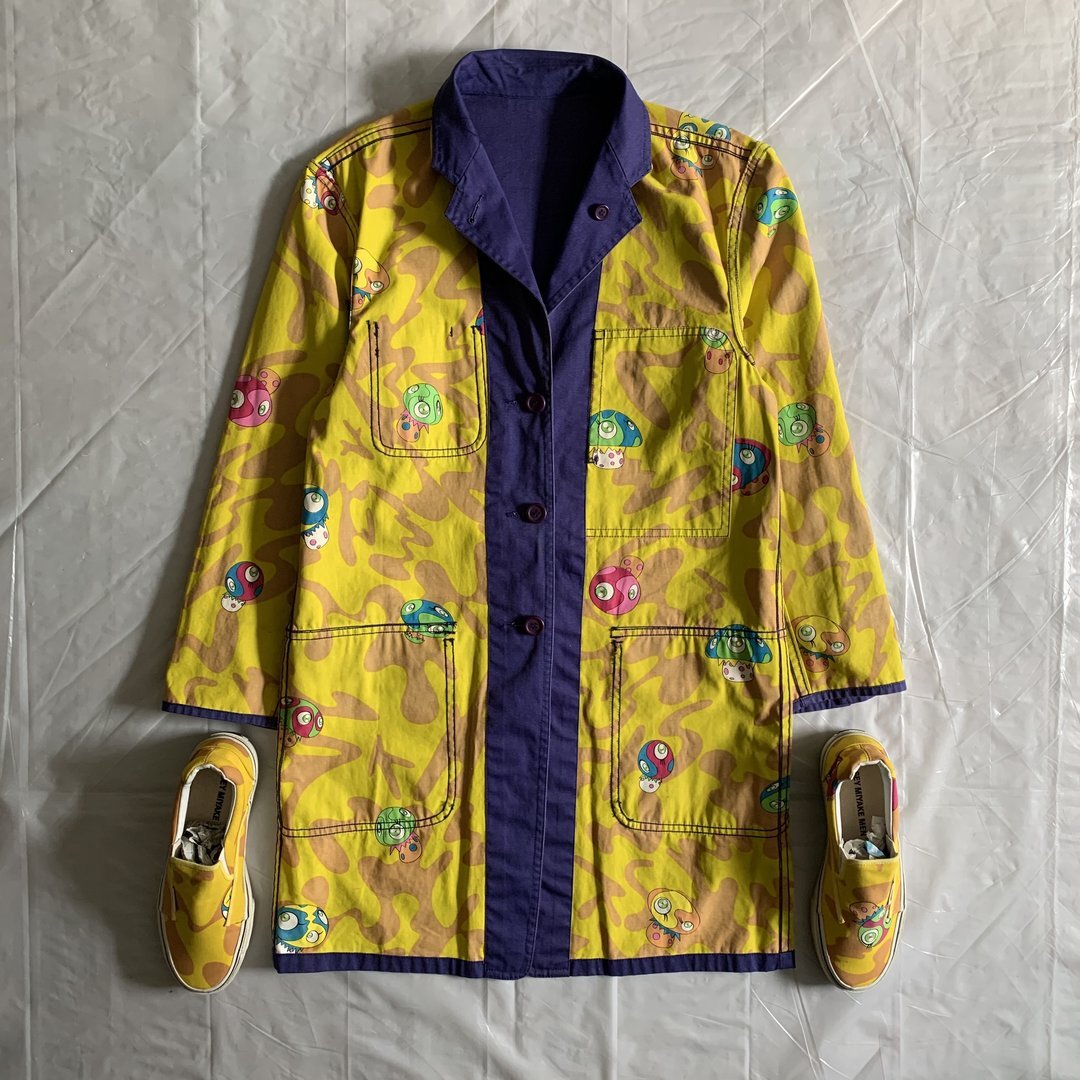INTERVIEW: CONSTANT PRACTICE’S ZEKE HEMME
With the prominence of Grailed as we now know it: the leading online destination when searching for any missed drops or nostalgic garms — the archival fashion game snowballed into a cluster of dealers who now curate their own independent shopping window on Instagram, cosily sharing their latest finds through their feed. Among them is Zeke Hemme, the man behind the account @constant_practice. In a nutshell, the way he himself got to build a following eager for his distinctive roster — at times utilitarian and military-inspired, at times baggy and nonchalant, and, let us not forget, jazzed up by the well-kept holy grail — is through, for fear of sounding like a broken record, “constant practice,” as he likes to put it.
TNO: To begin, can you recall a particular moment where your interest for past collections seriously grew? What were the first few archives you bought, and when did you realise you could become an archive dealer yourself?
ZE: Like most, it happened when Grailed was popping off about four years ago. At the time I bought some Undercover pieces which were and still are considered among the bedrocks of archival clothing. That spurred me to dig into the other seasons, collecting a few things for myself when I’d find something to my liking. But much to my disappointment, most pieces wouldn’t fit me— Undercover’s aesthetic is rooted in punk, often with slimmer silhouettes.
That’d be when I got into Yohji Yamamoto. The label’s distinctive signature look is more boxy and loose-fitting. It’s almost a one-size-fits-all. And so from there I’d go on to search for Yohji archives instead and, after some time, piled them up to the point where I would start selling them on Grailed, which was a bit odd as most were buying and reselling safe bets like an OG Raf bomber jacket or anything Supreme.
Craig Green SS2016
“This piece comes from a collection that expanded what the designer established in his first few formative, foundational years and helped solidify his place in the fashion scene. What’s thrilling about it is the elements of versatility and adaptability that it carries. It can be worn in more than one way, letting its wearer engage and play with the dynamic ties, wrapping them in the way it feels best.”
Kiko Kostadinov for Stüssy’s 35th Anniversary Capsule
“When Kiko was tasked to take on the design lead for Stüssy, he deconstructed/chopped/sliced and diced deadstock garments and reconstructed them into this newly deformed, yet still recognisable merchandise. And in my eyes, this very capsule collection is one of the main reasons why the streetwear label is still so coveted today.”
Margiela AW2004
“Rebuilt from common everyday sweatshirts, this piece comes from a collection that initiated the trend to reconstruct cutoff garments.”
From there things just kept on growing, right? If we look at your current roster, you’ve been collecting many Yohji archives — close to two hundreds since you began selling — and just as much Issey Miyake, Comme des Garçons and Junya Watanabe pieces. There are a few recent designers, too, like Craig Green or Kiko Kostadinov. And what’s more, you’ve got a solid selection of proper outerwear pieces. How do you go about finding them, and what’s your curation process and, if there is, intrinsic theme?
I guess the way I do it is by keeping an eye open, really. The only way is to keep on browsing, constantly, and then through all the research there’s a point where you really start to get a brand’s body of work, and what may be worth bringing back into the mix. More than anything, it’s got to somehow fit in with the rest of the selection. Whether I’m looking through a designer’s past seasons or shop for utilitarian attires, I’m trying to stick to pieces that have been designed with so much care and skill that they far surpass the idea of what is considered “in”. That could be uniforms from the air force or properly maintained outerwear and vintage sportswear. Just to give you an idea, in my recent selection there’s these parachute jumping-inspired Nike backpacks from the 90s, with roomy external pockets and loops throughout. Stylistically, it’s nothing too showy. But the bag itself remains as relevant today as it did back then.
Of course there will always be the much-coveted grail in my curation, like a Yohji leather jacket with a vintage pin-up girl graphic or a fully patchworked CdG jacket— that’s what kickstarted the whole thing, after all. Only that when I’m adding a designer piece to my roster, I make sure that it stands out because of its design features — a piece that has an elaborated embroidery or a fresh colourplay, say — and not just for the sake of name-dropping.
Issey Miyake SS2000
“Bringing the creative geniuses of Issey Miyake and Takashi Murakami to one, some would say that this is the first major “collaborative” effort between a designer and an art icon as we now see them.”
Comme des Garçons Homme Plus SS2000
“Sourcing fabrics from Paris’ famous historical tapestry factory The Goblins, this jacket has been made as a one-off, just like the other patchwork pieces from the collection. It’s been said, though I don’t know for sure, that the runway pieces were actually custom orders and thus were sold out even before hitting the shelves.”
Junya Watanabe SS2005
“This jacket here is a personal favourite of mine, from a collection that brought about extremely wearable and functional pieces. Whether it’s Gore-Tex nylon or water resistant wool, transformable designs, garms with multiple cargo pockets or customised bags by Yoshida PORTER— it was fully inspired by mountaineering and hiking gear.”
Has the quarantine affected you in any way? While there must definitely be some negatives, the interest for archives might keep on growing given that people now seem to want stuff that has a greater meaning…
Well the biggest headache was figuring out how to keep business going with the new shipping hassles. There can’t possibly be any returns in such circumstances and, sad to say, international fees had to increase. But that’s out of my control, and yet most have been understanding. Usually when someone buys an archive piece, it isn’t an impulse buy. And so they want to make sure it makes it home.
Now I don’t know how the lockdown is going to affect our shopping habits, but I will say that if there is a growing enthusiasm for archival fashion, it’s got to do with people actually growing up and getting to know their personal style better and what works for them. Same goes for most things... someone’s interest in a niche thing will naturally become more focused with time and perhaps, more mature. There comes a time for every streetwear and sneaker head to realise that not every drop is worth buying. It’s like, how many pairs of shoes do we really need?
I for one have a wife and a newborn and wouldn’t see myself wearing the latest, most-hyped gear around them, for the only reason that it might get thrown up on. And so the stuff that I wear, and sell as well, is more versatile and functional in that sense than trendy. It could be a simple crewneck, something I wouldn’t feel too bad if it gets beat up a bit. Or it could be a jacket that I’m going to wear over and over again. But then again that’s the whole point— you’ve got to wear what you’re buying.
While you’ve built your business through social media and your website, you recently held a physical pop-up installation in Washington, D.C. How did you go about setting it up, and how did it go?
It happened organically after I went out to grab a bite at the communal marketplace/restaurant Maketto with my sister who’s been in Washington for a few years now. Turns out that I became friends with the manager, whose name is Raw, and started to talk to him about whether I could use the space to showcase the archives I’ve had. It was truly a blessing as he’s the one who’s been dealing with any aspect of the promotion, from the editorial shoot to most of the management plan, like selling the tickets, limiting access to only a few people at a time, etc, etc.
It’s been good in that it was a time for me to get to chat more than usual with archive enthusiasts, to exchange a few words and knowledge. People are so informed nowadays and I must admit, some come at me knowing much more about the past collections of certain designers than I do.
We’ve all been in a shop where the stuff that’s being sold is way out of our price range and in these kinds of situations, don’t ask me why, but it shows. Was it important for you to make everybody feel welcome?
This is very true. And yes, to me it was very important to maintain an atmosphere that was relaxed and inviting, not cliquey. For some it’s been an occasion to see rather rare archives that they probably won’t ever see again, so might as well let them try them on. This is the kind of relationship and conversations I want to foster with my customers and those who are genuinely curious.
Are you looking forward to doing so again?
Well, if I was to run a permanent showroom at mine, I’d let people hit me up and set a time for them to come over, so they could see for themselves what’s on my feed. If they were to buy something, that’d be cool. And if not, there’d be no sweat.
What do you want people to take away from your platform?
Ultimately I’m trying to document a way of dressing that embraces a garment for what it is, from its core functionality, its sturdiness, its playful colour tones and all the other elements that make a design great. Take Katharine Hamnett, for instance. Her work has never really been looked at by the streetwear scene and yet, she’s been a clear inspiration for probably the most-hyped brand at the minute, and that’s Yeezy. With oversized proportions and deep pockets, with sandy, washed grey and navy tones, it’s as utilitarian as you can get. And then, digging into her early stuff, you realise that she’s been at the forefront of the fight against the fashion industry’s environmental negligence, making sustainable fashion before it was a thing.
All that to say, a lot of what’s been done 20 years, 40 years ago remains just as relevant today. And through my feed, I want to let the clothes speak for themselves, and for people to learn them.









